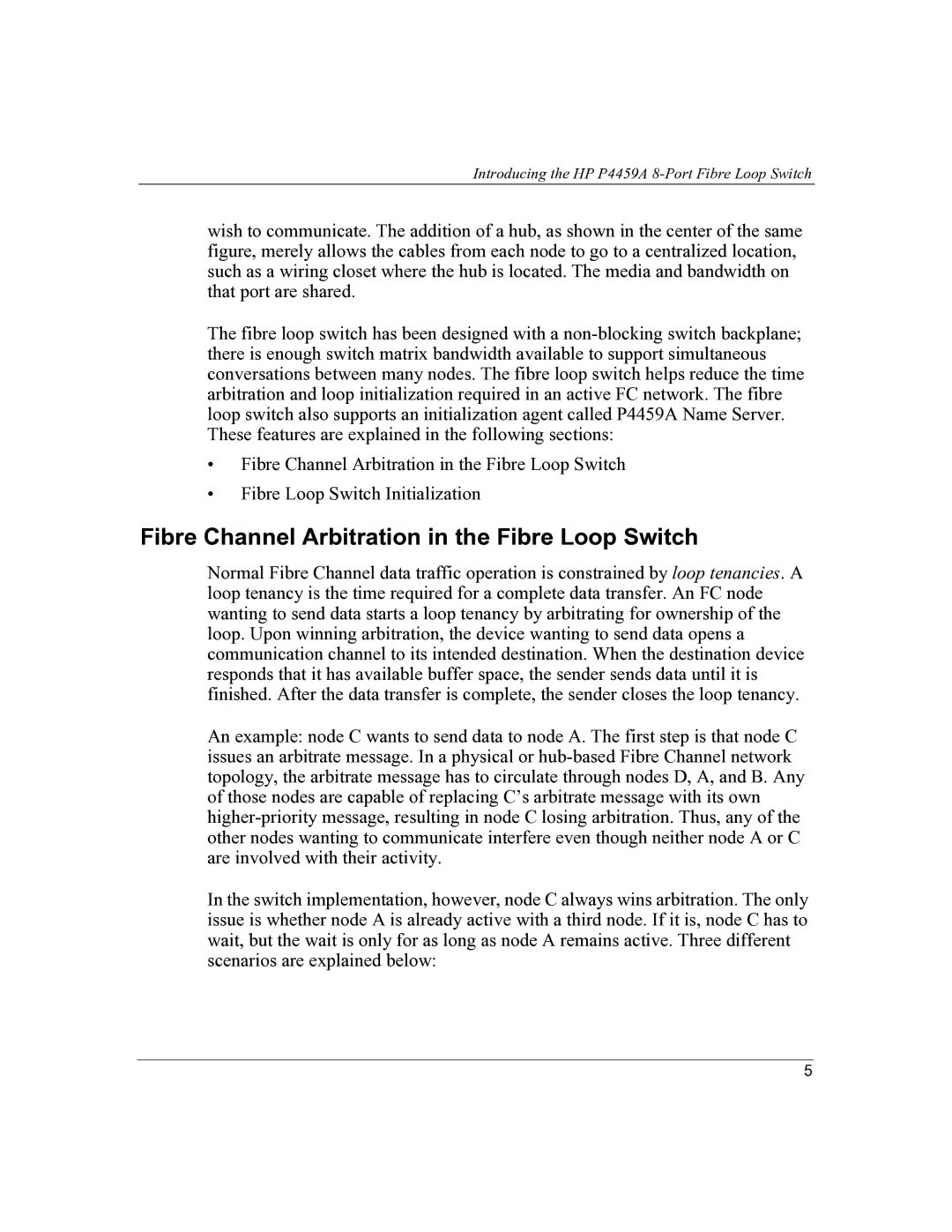
Introducing the HP P4459A
wish to communicate. The addition of a hub, as shown in the center of the same figure, merely allows the cables from each node to go to a centralized location, such as a wiring closet where the hub is located. The media and bandwidth on that port are shared.
The fibre loop switch has been designed with a
•Fibre Channel Arbitration in the Fibre Loop Switch
•Fibre Loop Switch Initialization
Fibre Channel Arbitration in the Fibre Loop Switch
Normal Fibre Channel data traffic operation is constrained by loop tenancies. A loop tenancy is the time required for a complete data transfer. An FC node wanting to send data starts a loop tenancy by arbitrating for ownership of the loop. Upon winning arbitration, the device wanting to send data opens a communication channel to its intended destination. When the destination device responds that it has available buffer space, the sender sends data until it is finished. After the data transfer is complete, the sender closes the loop tenancy.
An example: node C wants to send data to node A. The first step is that node C issues an arbitrate message. In a physical or
In the switch implementation, however, node C always wins arbitration. The only issue is whether node A is already active with a third node. If it is, node C has to wait, but the wait is only for as long as node A remains active. Three different scenarios are explained below:
5
